Practical Applications
The SSD approach has been implemented by the offshore oil and gas industry to evaluate the environmental impact of drilling discharge scenarios. Such discharge plumes are to some extent comparable with dredging plumes. Therefore, the approach may also be applicable to evaluate the effects of dredging. The implementation of SSDs in the EIF by the oil and gas industry is illustrated in this section.
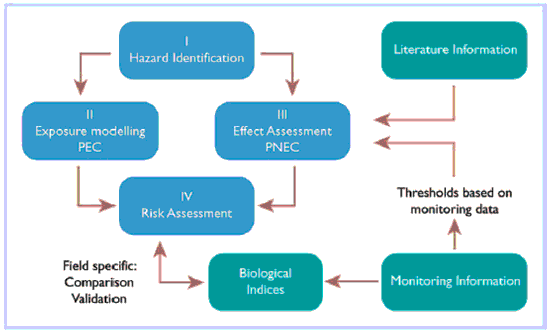
The environmental impact factor for produced water (EIF PW) was developed in the year 2000 by the oil and gas exploration and production companies active on the Norwegian shelf, as a risk assessment tool for environmental management of produced water discharges. The EIF PW is an indicator of environmental risk, with the purpose to aid the industry in developing a ‘zero harm’ strategy and selecting cost-benefit based solutions. The Norwegian authorities presently require using this tool in reporting and planning of management actions to reduce potentially harmful environmental effects associated with produced water discharges (Singaas et al., 2008). In order to further develop the toolbox for environmental management, the Environmental Risk Management System (ERMS) Joint Industry Project was established to develop an EIF for drilling discharges (EIF DD). The framework for the EIF DD indicates the different steps in the risk assessment process (Singaas et al., 2008) (see figure). Six stressors related to the discharge of drilling waste to the marine environment were identified (see step I in figure and table below), of which two occur in the water column (toxicity of chemical substances and physical effects of suspended clay particles) and four in the sediment (toxicity of chemical substances, burial of organisms, oxygen depletion, and change in sediment structure).
| Environmental compartment | Stressor (Drilling operations) | Stressor (Dredging operations) |
| Water Column | Toxicity of chemical substances | Toxicity can be relevant if dredged material is contaminated |
| Sediment | Toxicity of chemical substances | Toxicity is relevant when dredged material is contaminated |
| Physical effects of suspended clay particles | Physical effects of suspended sediment | |
| Burial of organisms | Burial of organisms | |
| Oxygen depletion | Oxygen depletion | |
| Change in sediment structure |
To assess the exposure (step II) the fate of each of the stressors is modelled. The effect assessment (step III) is based on laboratory tests and field measurements reported in literature. For each stressor identified a species sensitivity distribution (SSD) was constructed in such a way that the 5th percentile of the distribution corresponds to the Predicted No Effect Concentration (PNEC) of the constructed species. For risk assessment (step IV) for single stressors, the ratio of predicted environmental concentration (PEC) and PNEC is prescribed by the EU Technical Guidance Document on risk assessment (Anonymous, 2003). Sensitivity distributions for the various stressors were used to calculate the potentially affected fraction of species as a result of the simultaneous exposure to multiple stressors (msPAF). Monitoring information was available for validation purposes. Generally, a good correlation was found between model results and measured data (Singaas et al., 2008).
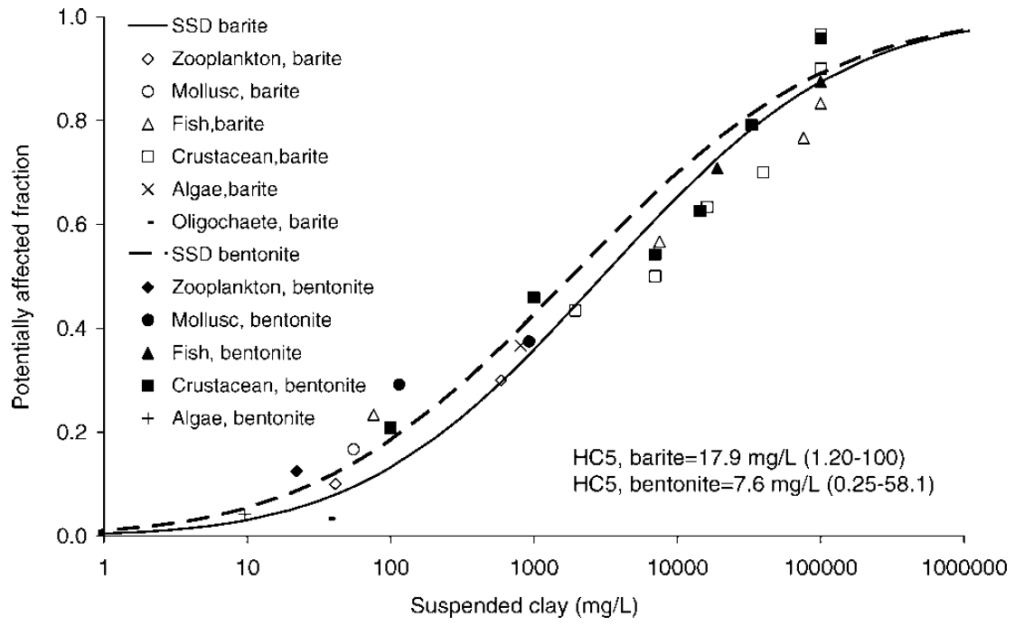
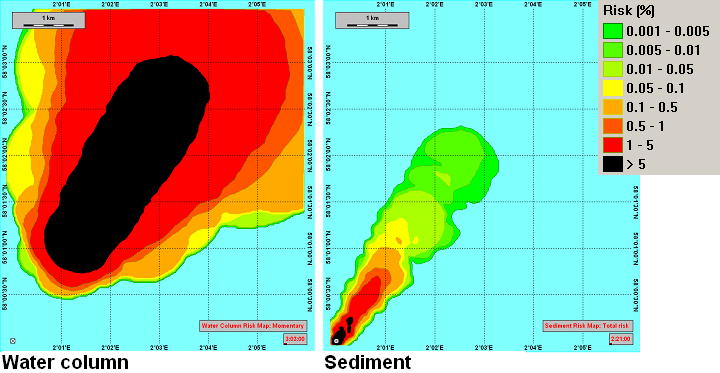
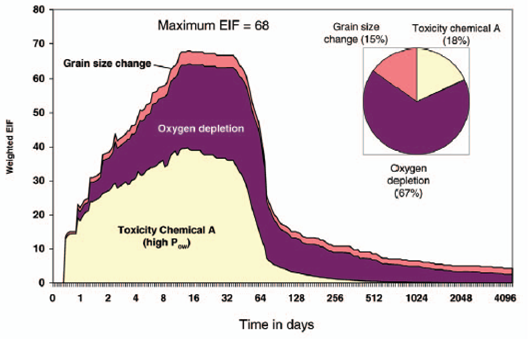
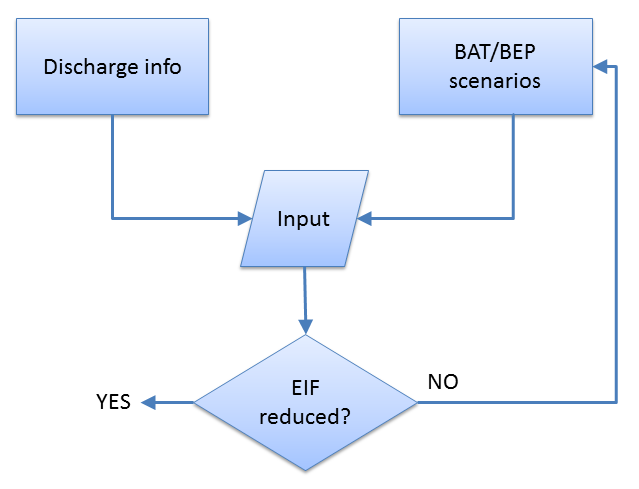
For suspended clays the data collection resulted in a database with effect concentrations for marine species, distinguishing different effect types, such as survival, feeding behaviour, growth, mobility, reproduction, oxygen consumption, and effects on the gastrointestinal tract (Smit et al., 2008a). Data were obtained from exposure studies with clay-sized particles (i.e. attapulgite, bentonite, clays, and barite) and also with various types of water-based drilling fluids. Most data were available for the species groups phytoplankton, zooplankton, crustaceans (excluding zooplankton), molluscs, and fish.
The SSDs, based on collected 50% effect concentration (EC50) values for mortality resulting from suspended barite and bentonite exposure, present median values and 5-95% confidence intervals (see SSDs with corresponding hazardous concentration) (Smit et al., 2008a). Filter feeding zooplankton and molluscs are, together with algae, among the sensitive taxonomic groups, while benthic crustacean and siphon feeding molluscs are relatively insensitive (Smit et al., 2008a). This supports the hypothesis that organisms living in the benthic boundary layer of fine sediments are accommodated to deal with elevated turbidity and sedimentation.
The value of the EIF is related to the recipient water volume and sediment surface area where msPAF exceeds 5% (Smit et al., 2008b) (see spatial risk map). The selected unit for the EIF for the 2 compartments is a water volume of in units of 100 m x 100 m x 10 m for the water column and 100 m x 100 m surface area for the sediment. An advantage of the EIF method is that it calculates the overall risk and the contribution to it from each stressor (see output of DREAM).
The EIF in its present form should be regarded as a management tool to identify and rank the most harmful discharges (and components of those discharges). This enables operators of production fields to evaluate mitigating measures on a cost/benefit basis, when applying the Best Available Technology (BAT) for treatment of produced water of all production fields (Smit et al., 2003). The EIF provides the possibility to assess different management options, enabling the field operator to prioritise the implementation of BAT for the specific field and to document Best Environmental Practice (BEP) (see EIF application for management option).
